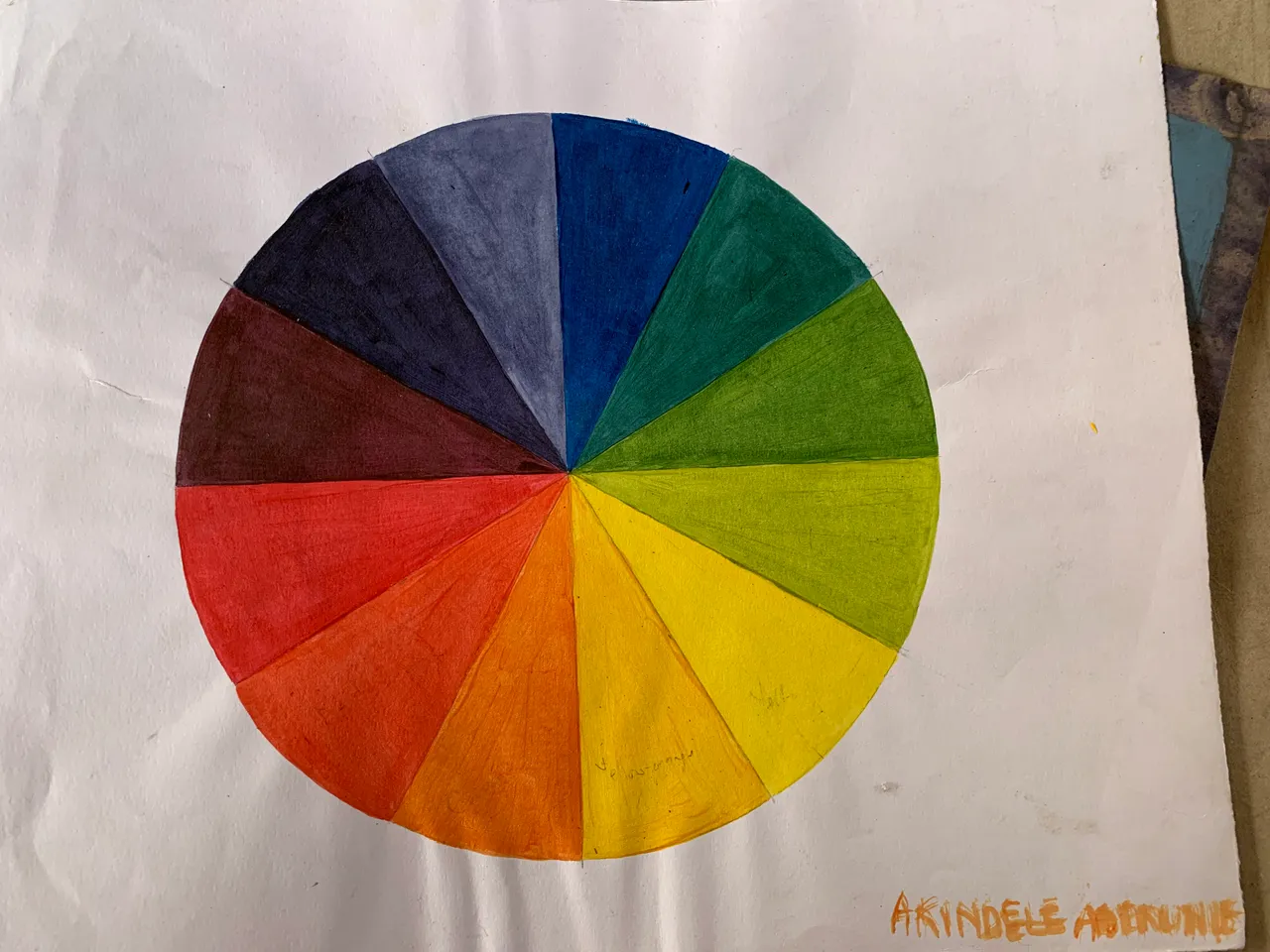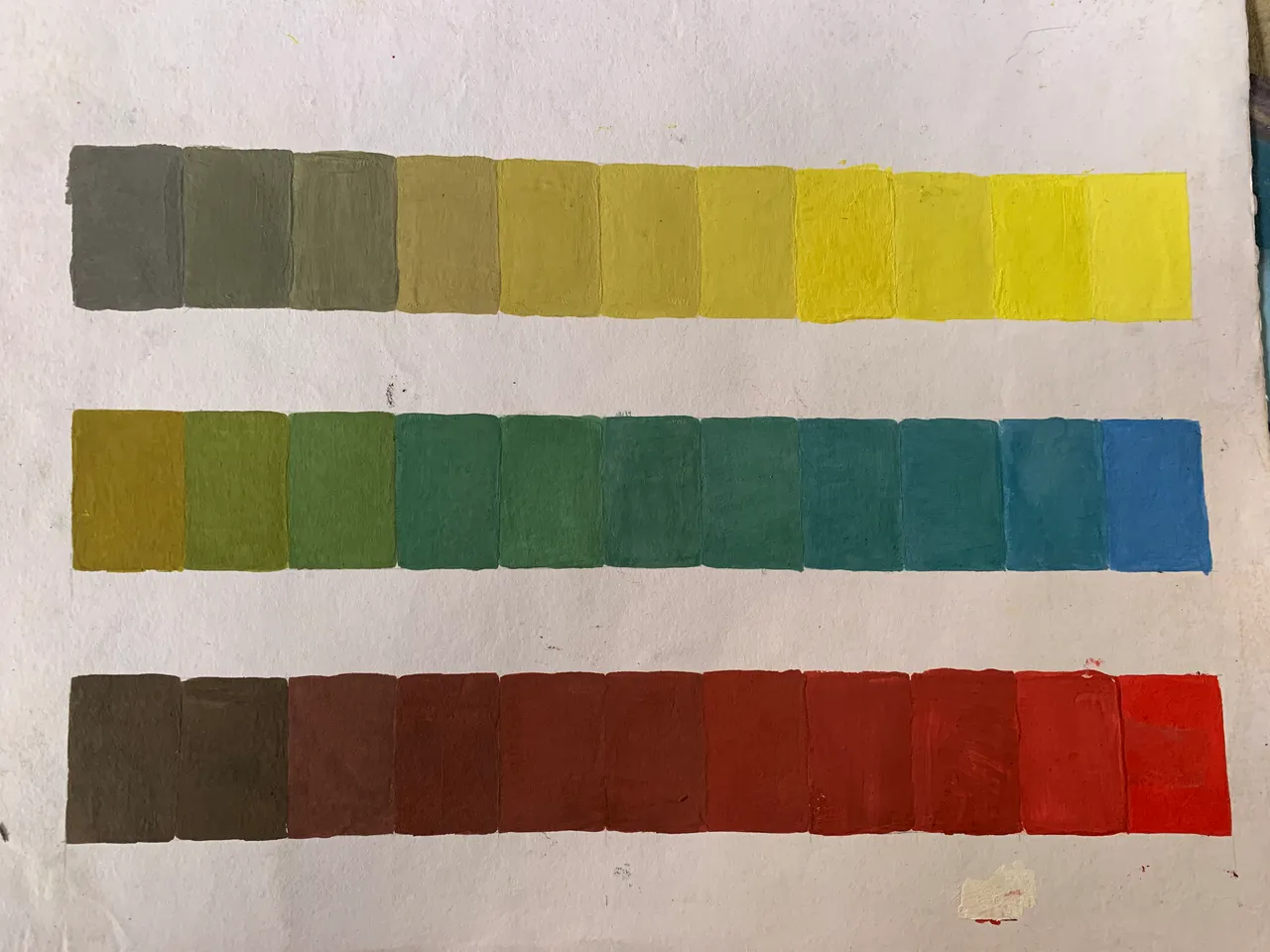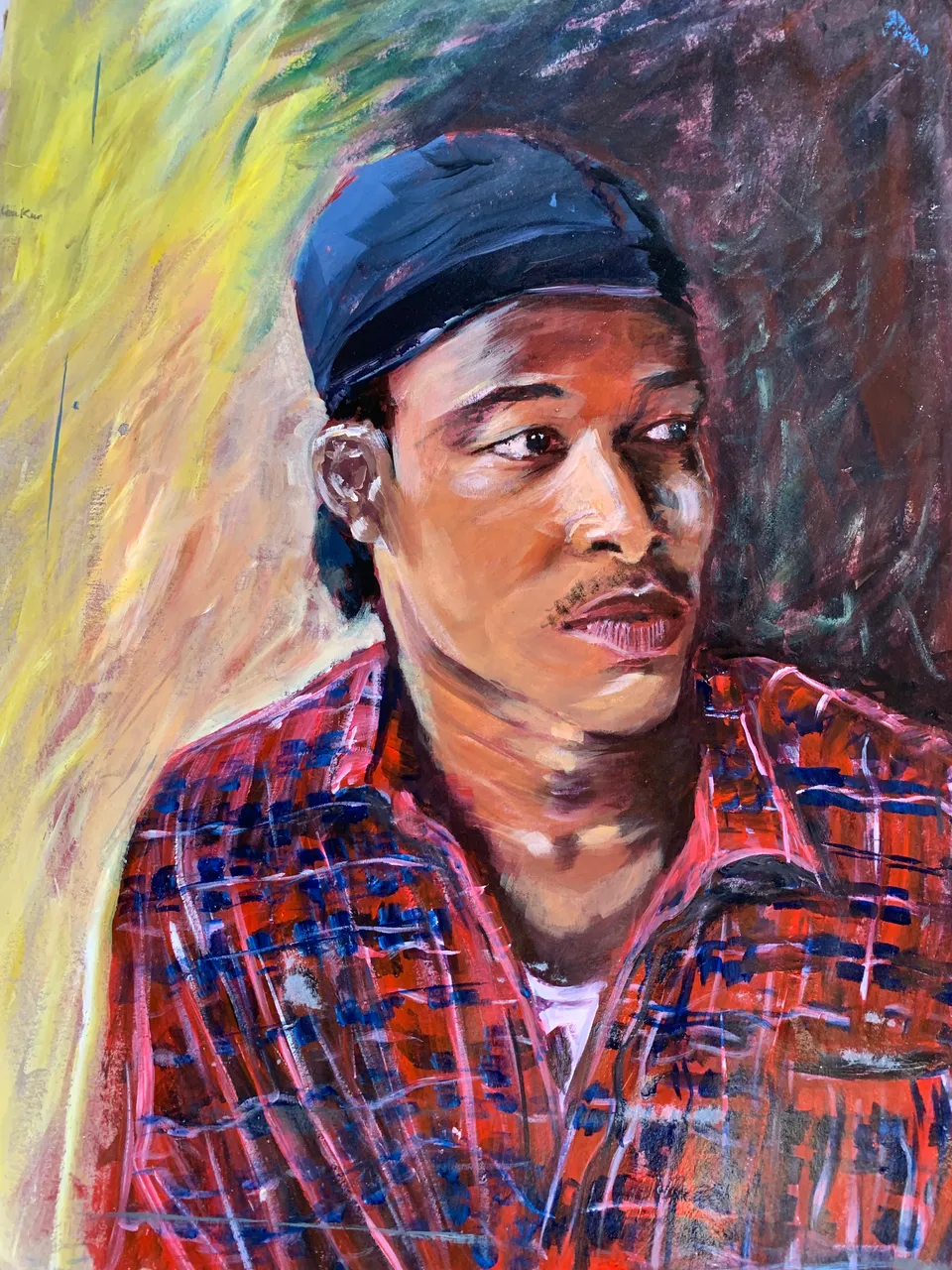HELLO HIVER,
Understanding colour theory is essential for any artist aiming to create expressive and realistic self-portraits. The first step in this process involves creating a colour wheel, which helps the artist grasp the relationships between primary, secondary, and tertiary colours, as well as concepts like warm and cool tones or complementary colours. By arranging these hues in a circular format, the artist builds a visual map for harmony, balance, and contrast in future works. The second stage is practising colour gradation, which involves gradually blending colours to explore variations in tone, shade, and saturation. This stage teaches control in mixing and helps the artist render realistic transitions in skin tones, fabrics, and backgrounds. These foundational exercises directly inform the self-portrait painting process, enabling the artist to apply colour with confidence and precision, as seen in the rich details of the face, clothing, and background in the final artwork.


